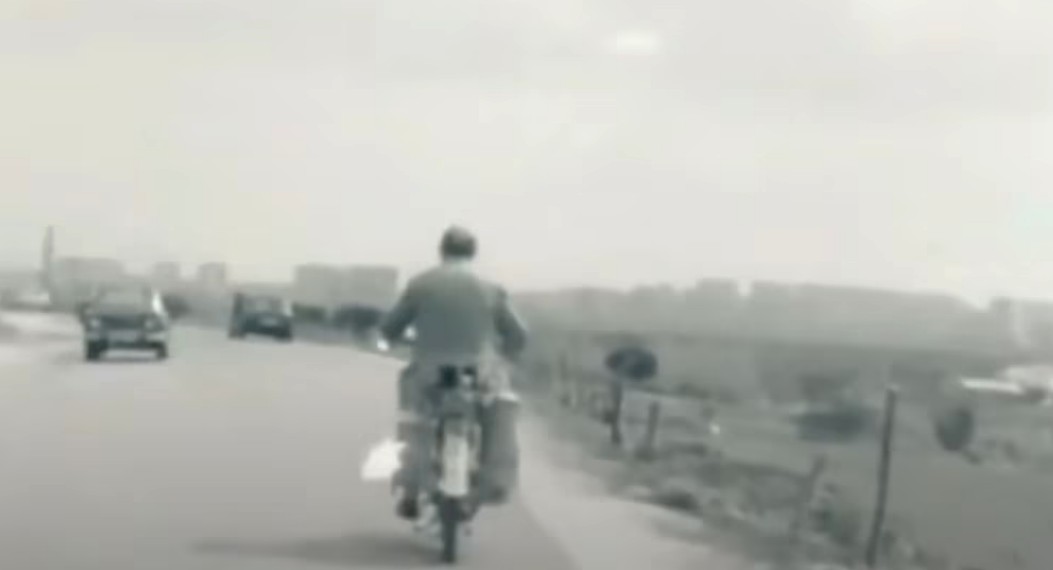I’m not certain about the attractions of electric cars, but the fact is – they are getting better every day. Now the Chinese are coming to Europe and usurping the leadership of Tesla (with all its disagreeable political baggage).
Still, in an accident, a fire, it’s not much good if the doors won’t open.
My father-in-law would tell of the demise of the steam-car a hundred years ago. They were slow to start, but evidently cheap to run. The regular petrol car manufacturers put out a series of adverts – ‘our cars never explode’ – giving one the impression that the Stanley Steamers often did.
Well sure, if you forget to loosen the steam-valve.
They had electric cars a century ago as well, we see them on the social media – top speed: 10kph. Just the thing for city use.
If I wasn’t so set in my ways (and had enough money) maybe I would buy an electric car. They charge up quickly now (the reason no one would buy a second-hand Tesla today is because of the progress in re-chargeable batteries), and I could run a long cable from the plug by my bed down into the orange-orchard below which doubles as the parking lot.
The European Commission wants to end new petrol and diesel cars by 2035, leaving us with zero-emission vehicles, which will be fast and efficient and no doubt feature a special knob to pull when they catch fire and the doors won’t open. Driverless cars too.
Not all of the car manufacturers are pleased. They talk of ‘stubbornly sluggish consumer demand’. Put it another way: vroom vroom!
They are probably the ones who put out those stories on social media about the electric cars blowing up at the drop of a hat. Competition being a many-edged sword.
Luckily, and despite the occasional hiccup – somebody getting into the Jaguar and Range Rover company computer this summer, or Volkswagen and others making false claims about their emissions control – we still trust our automobile manufacturers, and ‘built-in obsolescence’ is now just a bad dream – or maybe not with that Lada that I once owned.
Then, along come the visionaries, who will save the world, clean up the environment, and annoy a lot of people involved in either pumping oil, making dirty cars and trucks, or even running a petrol station or an overpriced parking garage.
Burning fuel is bad for the environment, and ordinary gas-guzzlers cost more to repair at the mechanics (they have more bits to go wrong than an electric car), but what if the fuel was dirt common and had no emissions whatsoever?
I’m not talking here about a solar-powered vehicle, shut down on the motorway in the middle of a rainstorm.
Two inventors showed us the way forward many years ago. One was Stanley Meyer and his Water Powered Car which – he claimed – ran on tap-water and an electrolysis producing fuel-cell. There’s a red beach-buggy with ‘Jesus Christ is Lord’ on the side, which was his.
We read, ‘…Then, on March 20, 1998, Meyer met with Belgian investors interested in his invention. Stanley Mayer didn't know it, but that would be his last meeting.
In the middle of dinner, a toast was proposed, after which Stanley quickly left the table, clutching his throat. He reached the parking lot and collapsed to the ground. His last words are said to have been: "They poisoned me"’. Poor chap. His car and papers disappeared too.
Wiki is uncharacteristically unkind: ‘The water fuel cell is a non-functional design for a "perpetual motion machine" created by Stanley Allen Meyer (August 24, 1940 – March 20, 1998). Meyer claimed that a car retrofitted with the device could use water as fuel instead of gasoline…’
Another interesting inventor was a Spaniard called Arturo Estévez Varela, who, says the National Geographic, was ‘a modest inventor from Extremadura who, in the midst of Franco's Spain, was the protagonist of one of the most fascinating and at the same time conspiratorial stories of the time: Arturo claimed to have developed an engine capable of running solely on water…’ 
In front of some startled journalists, Arturo drank some water from a jug and then poured the rest of it – four litres of tap water – into the tank of his special 49cc motorcycle and took off for a journey of 900 kilometres. All very odd, and the Franco regime soon scuppered any more stories about the eccentric inventor – perhaps to appease the Americans. The motor, possibly, was tricked with a piece of boron: in other words, it wasn't a water engine, but a hydrogen engine generated using an expensive and non-renewable material.
Although he registered over a hundred patents, Arturo died in obscurity in Seville in the nineties.
As for me, I’m working on a system whereby my car runs for free, by putting a modest sign on the rear: ‘Give us a push, mate!’